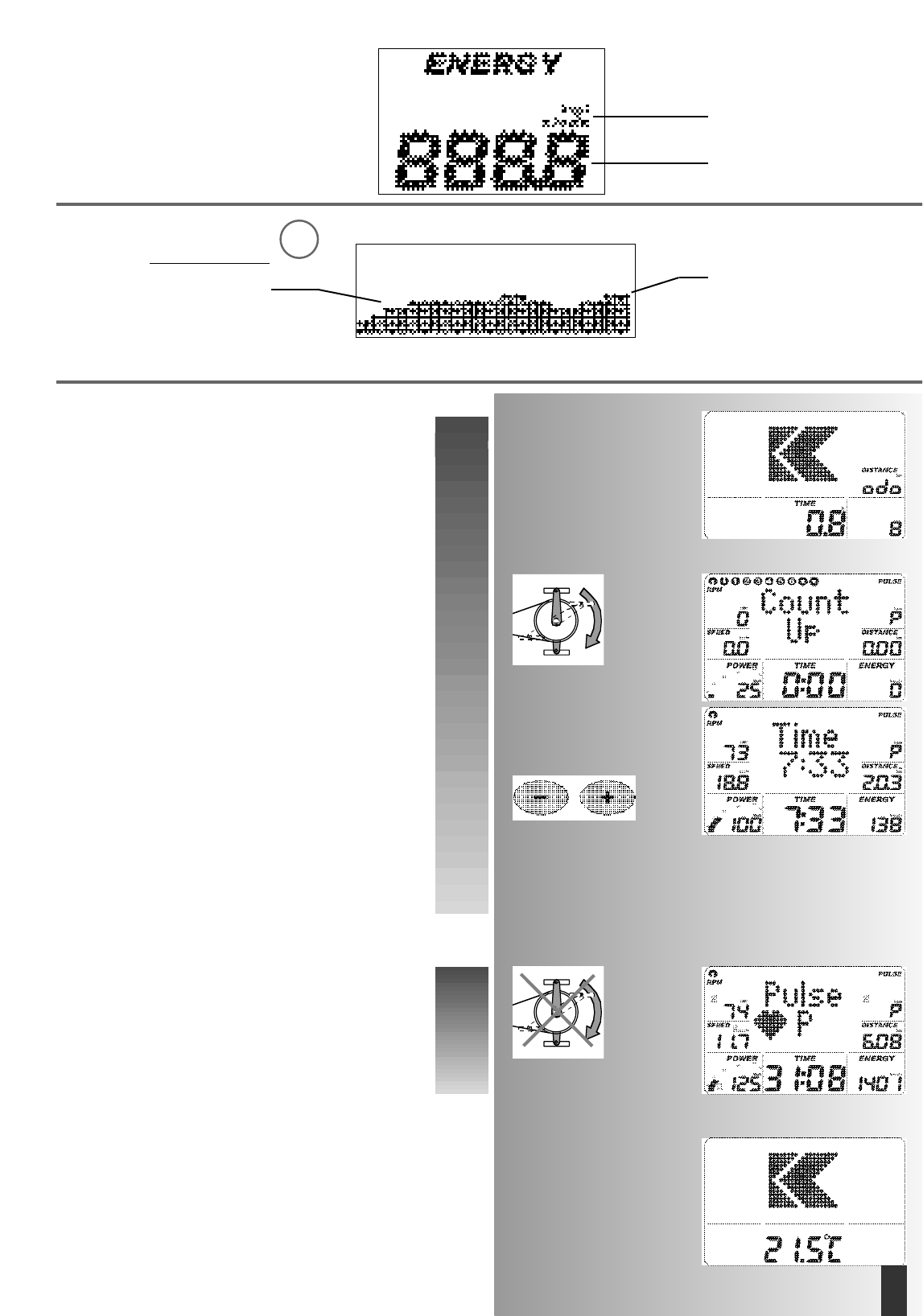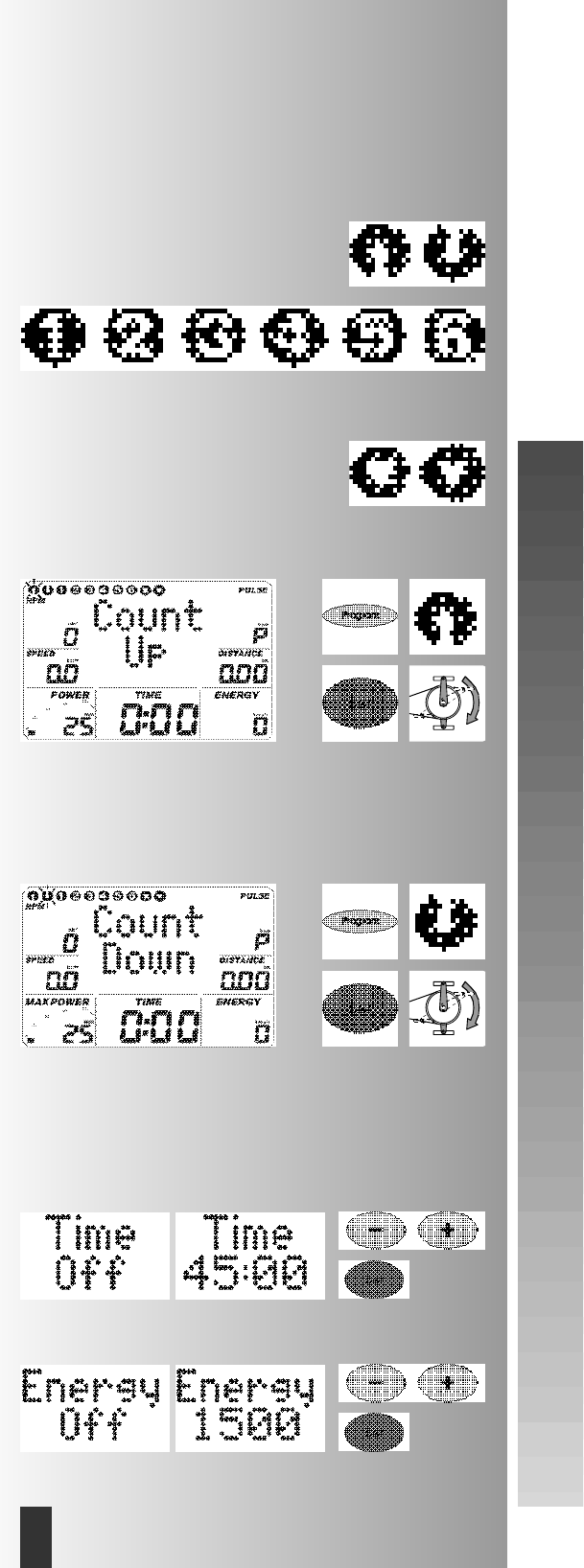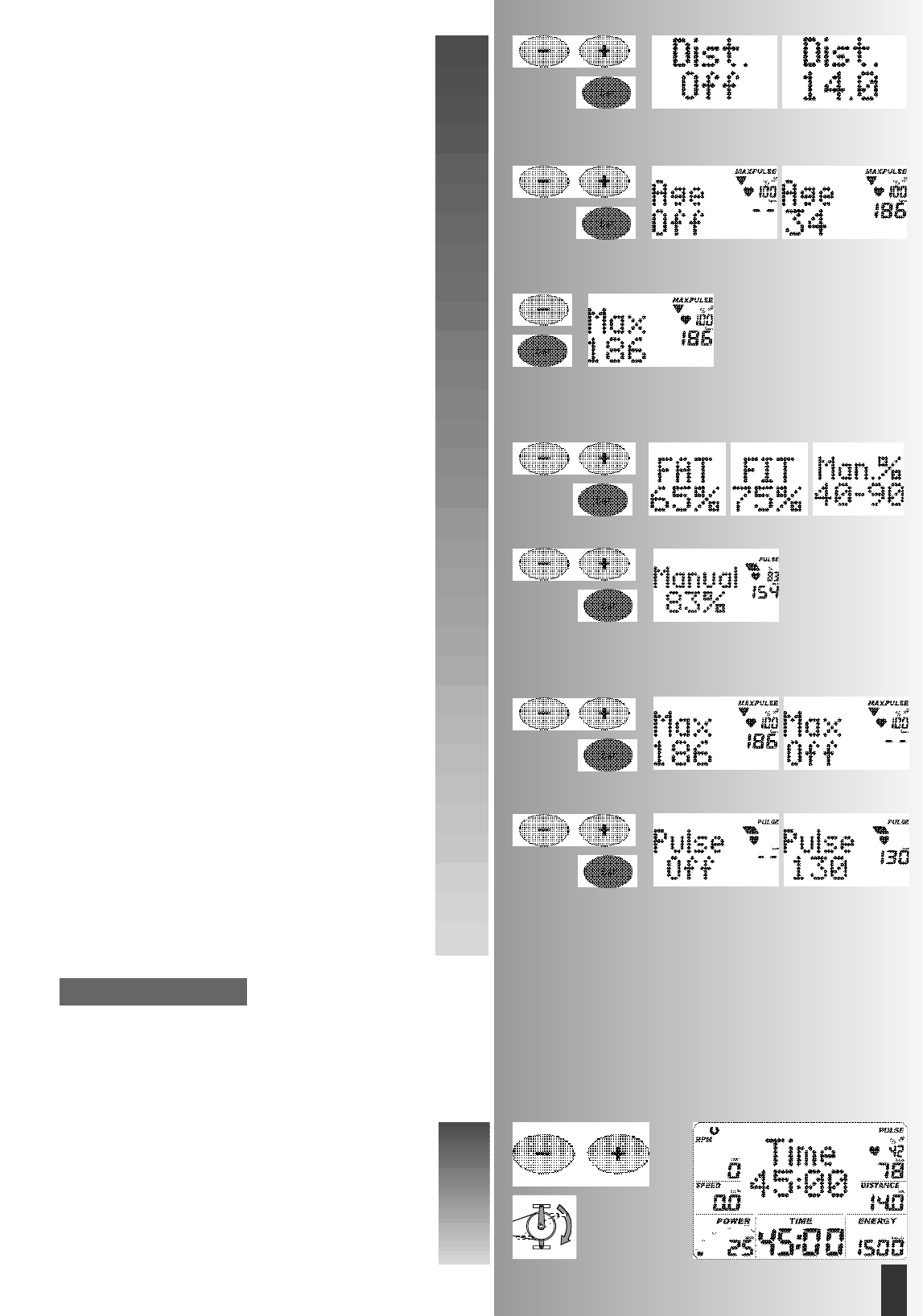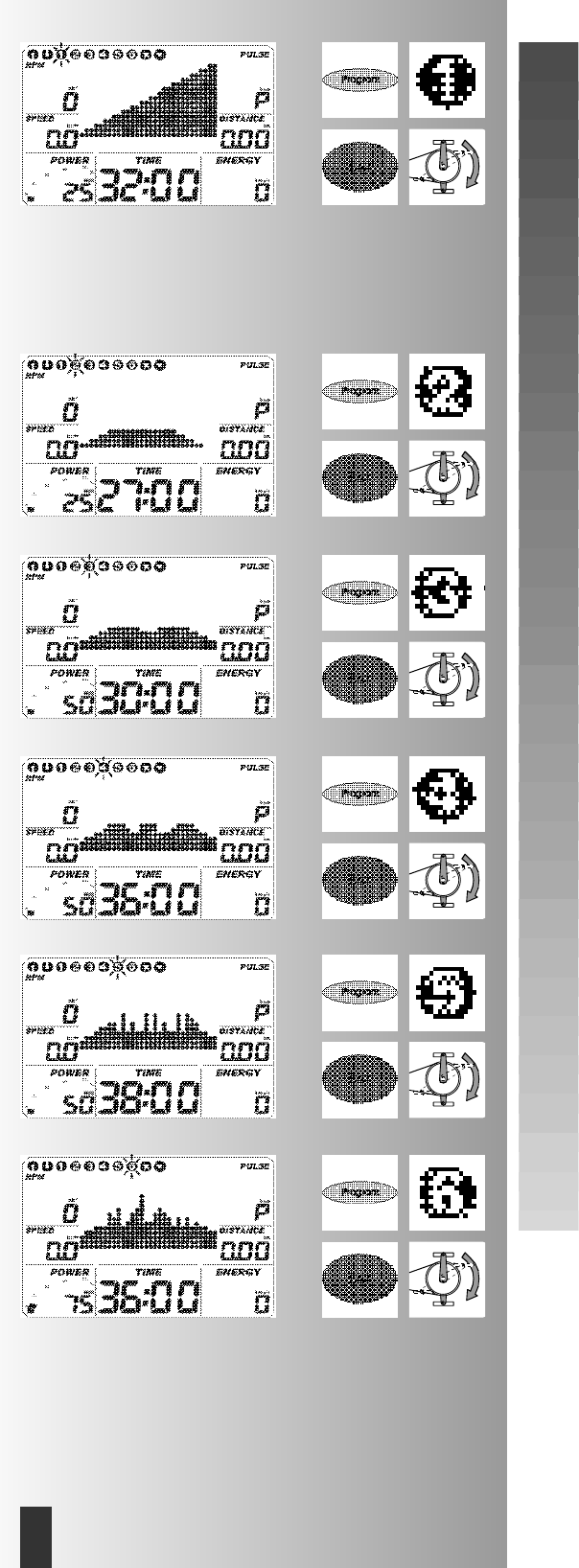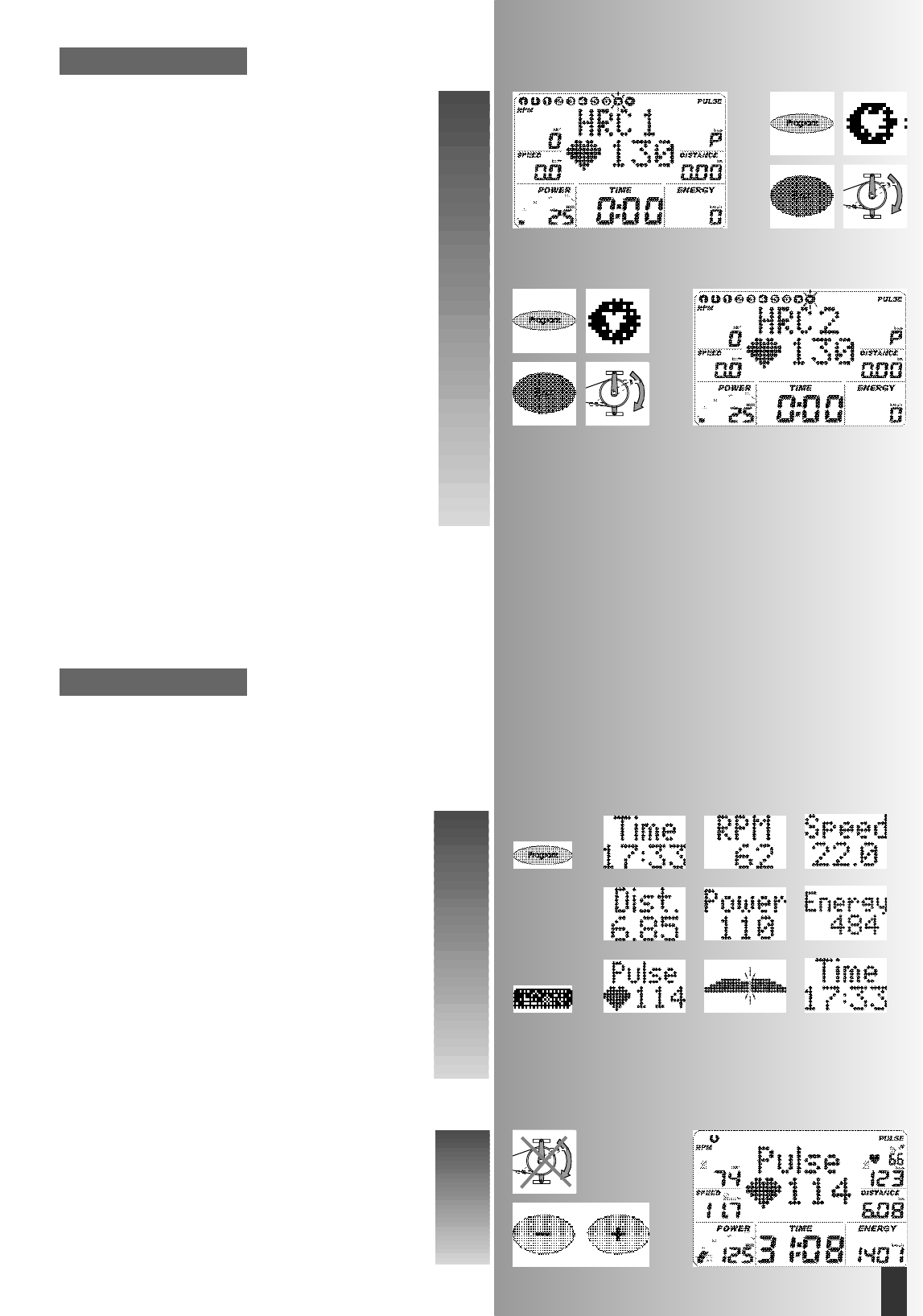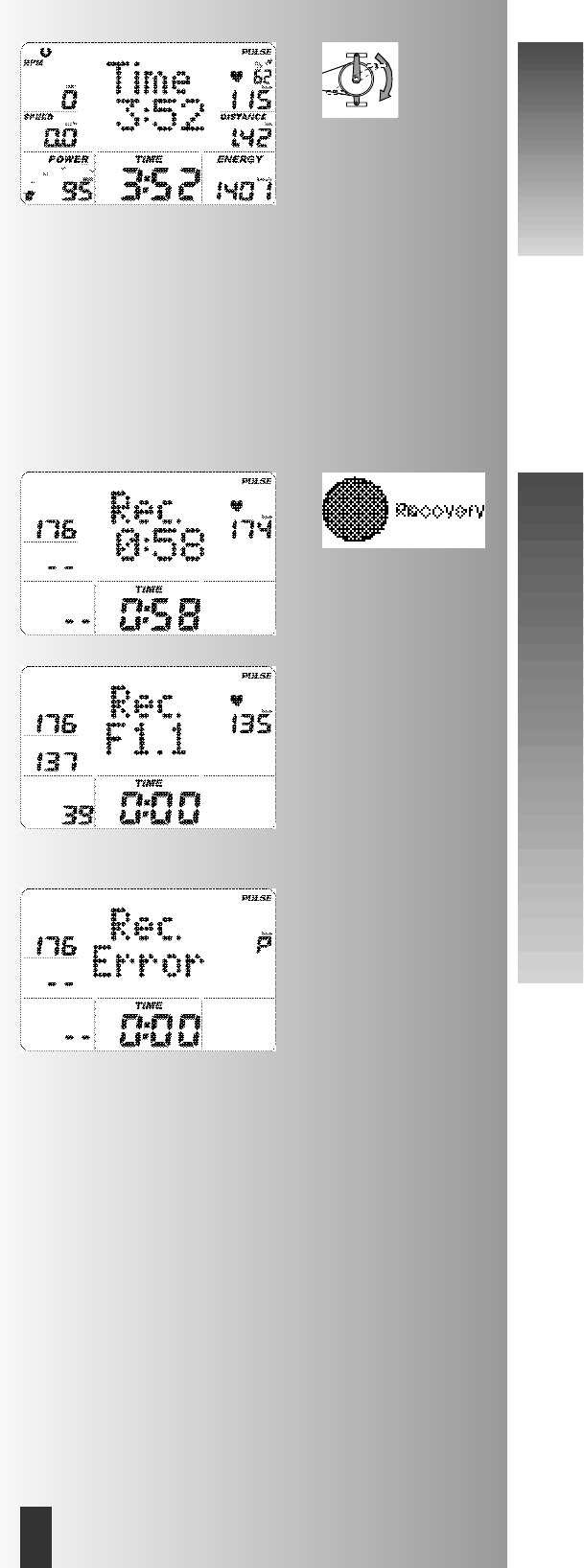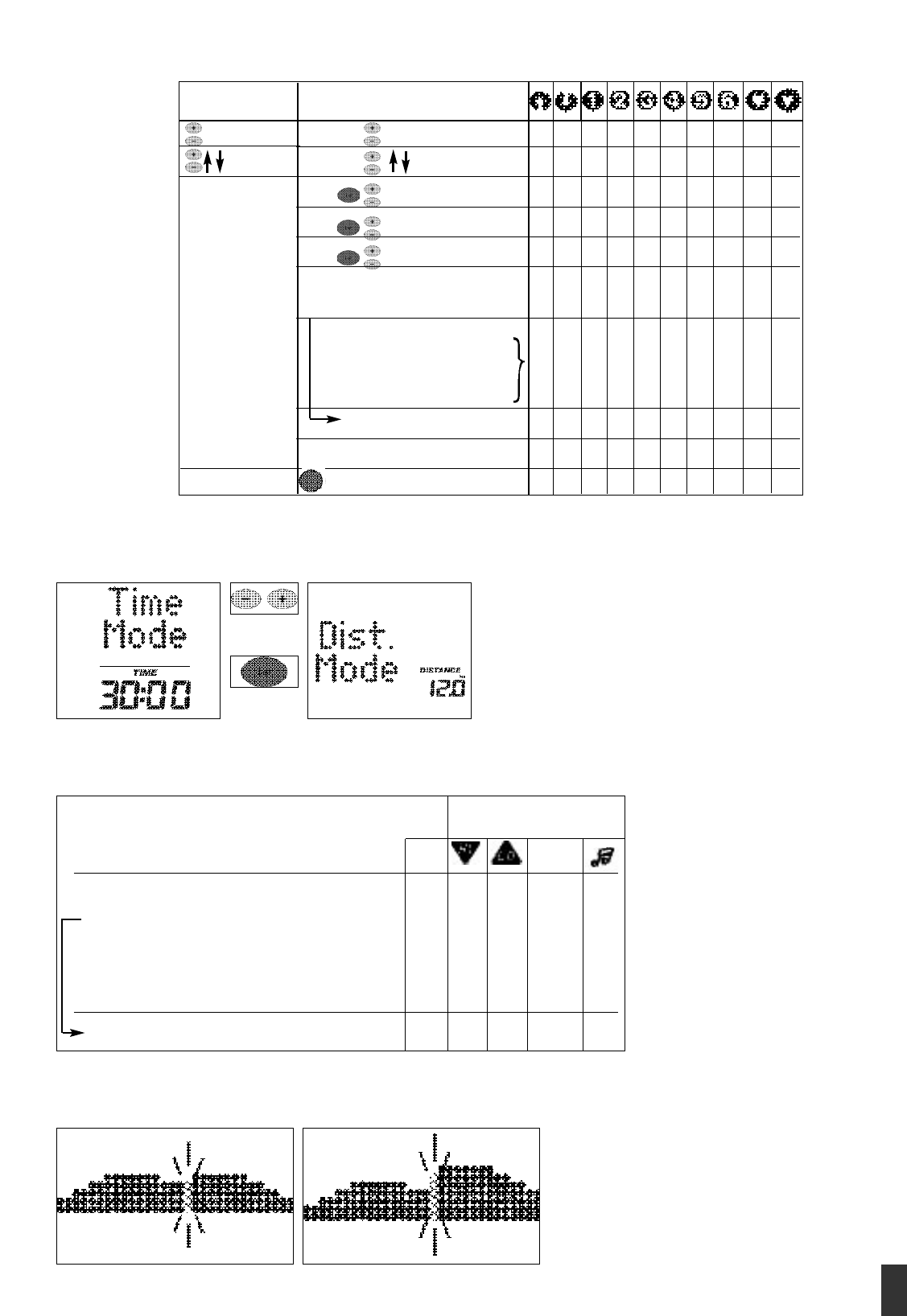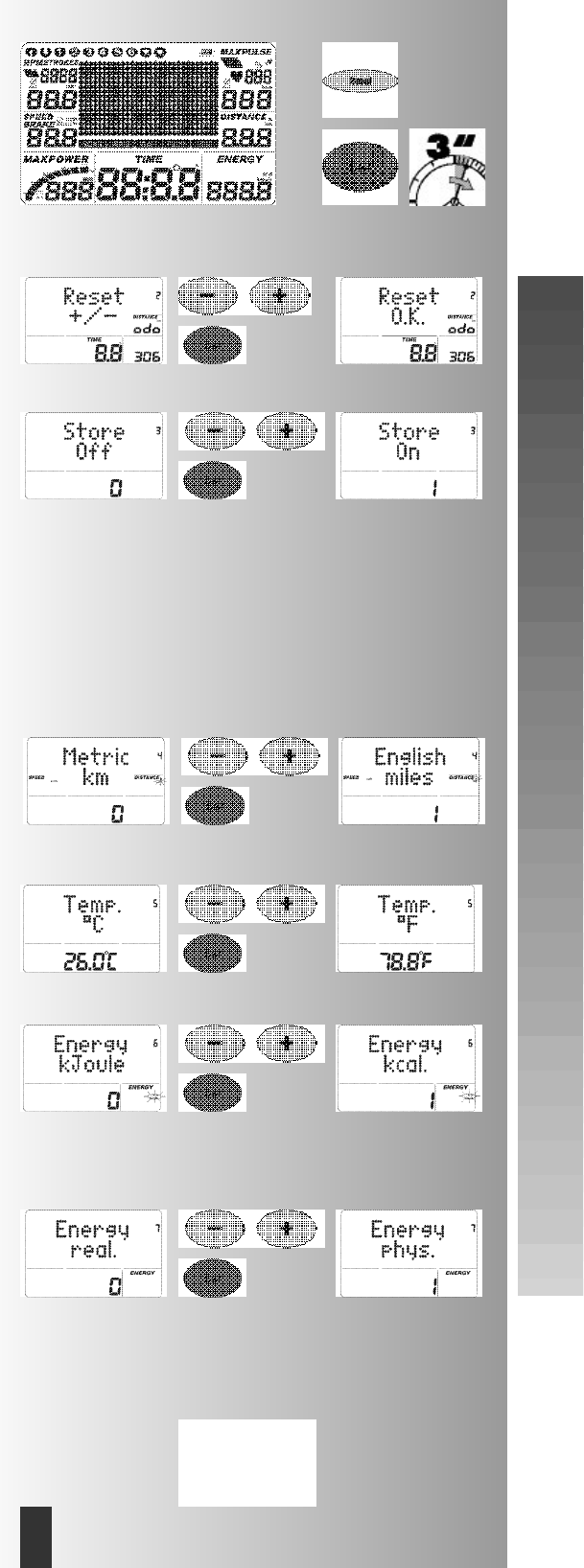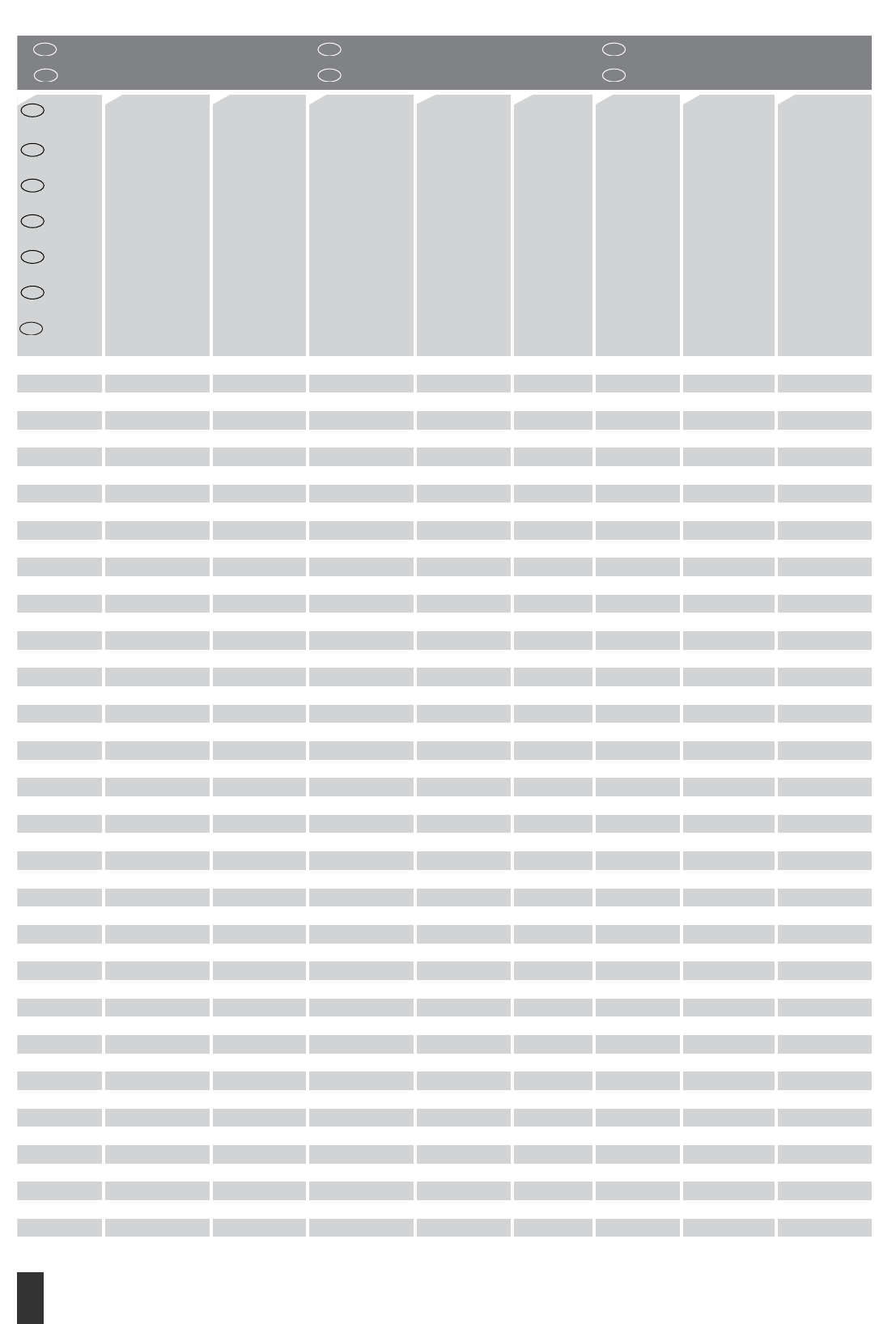30
GB
sensor to your earlobe, rub it well 10 times to increase
circulation.
Avoid disturbing pulses.
• Attach the ear clip carefully to your earlobe and
search for the most suitable point for measuring (heart
symbol blinking without interruption).
• Do not execute your training directly under strong
incidence of light e.g. neon light, halogen light, spot,
sun light.
• Completely exclude vibrations and wobbling of the ear
sensor including the cable. Always fix the cable to
your clothing by means of the clip or even better to a
headband.
With chest belt (accessory)
Available from your dealer
obtainable is specialist stores. Observe the respective
instructions.
Interferences at the training computer
Press the reset key
Notes on the interface
The program “ERGO concept” [“ERGO-Konzept”], item
No. 7926-500, available at your specialist dealer,
allows you controlling of the KETTLER ergometer with a
commercially available PC via this interface.
On our homepage www.kettler.de you will find notes on
further possibilities with the interface.
Training instructions
Sports medicine and training science use bicycle
ergometry, among others, for examination of the
functionality of the cardiovascular and respiratory system.
Whether your training achieved the desired effects after
some weeks you can determine as follows:
1. You achieve a certain stamina with lower
cardiovascular performance than before
2. You keep a certain stamina with the same
cardiovascular performance over a longer period.
3. After a certain cardiovascular performance you
recover faster than before.
Guide values for the stamina training
Maximum pulse: maximum load means the achievement
of the individual maximum pulse. The maximally
achievable heart rate depends on the age.
To that applies the empirical formula: the maximum heart
rate per minute corresponds 220 pulse beats minus years
of age.
Example: age 50 years > 220 – 50 = 170 pulse/min.
Weight: a further criterion for determination of the
optimal training data is the weight. The nominal default
for maximum load is 3 Watts/kg body weight for men
and 2.5 for women. Furthermore, it must be observed,
that from age 30 on capability decreases: for men
approx. 1 % and for women 0.8 % per year of age.
Example: man; 50 years; weight 75 kg
> 220 – 50 = 170 pulse/min. maximum pulse
> 3 Watts x 75 kg = 225 Watts
> Minus “age discount” (20 % of 225 = 45 Watts)
> 225 – 45 = 180 Watt (nominal default for maximum
load)
Load intensity
General notes
System sounds
Switching on
On switching on, a short sound is emitted during the
segment test.
End of program
The end of a program (profile programs, countdown) is
indicated by a short sound.
Maximum pulse exceeding
If the set maximum pulse is exceeded by one pulse beat,
2 short sounds are emitted every 5 seconds.
Error output
For errors, e.g. recovery not executable without pulse
signal, 3 short sounds are emitted.
Automatic scan function when switching on and off
For activation and deactivation of the automatic scan
function, a short sound is emitted
Recovery
In the function the centrifugal mass is slowed down
automatically. Further training is unsuitable.
Calculation of the fitness grade (F):
Grade (F) = 6.0 –
(
10 x
(P1–P2)
)
2
P1
P1 = load pulse, P2 = recovery pulse
F1.0 = very good, F6.0 = insufficient
Switchover time/distance
For the programs 1-6, in the defaults the profile per
column can be switched over from time mode (1 minute)
to distance mode (400 meters or 0.2 miles).
Profile display during training
At the beginning, the first column is blinking. During the
training it proceeds towards the left.
For profiles over 30 minutes it proceeds up to the middle
(column 15). Then the profile shifts from the right to the
left. When the profile end appears in the last column
(column 30), the blinking column further proceeds
towards the right until the end of the program.
Arrows up/down
If a power rate cannot be achieved with speed (e.g. 400
Watts with 50 pedal revolutions), the up or down arrow
prompts faster or slower pedaling.
Average value calculation
The average value calculation takes place per training
unit.
Notes on pulse measurement
Pulse calculation starts, when the heart in the display is
blinking simultaneously to your pulse beat.
With ear clip
The pulse sensor works with infrared light and measures
the alterations of the translucency of your skin, which are
caused by your pulse beat. Before you clamp the pulse
Training and Operating Instructions




































































































